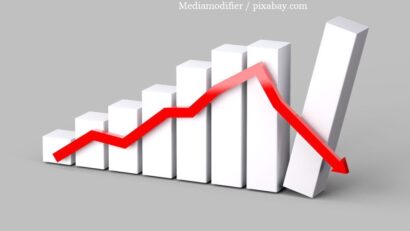A trade war that is redrawing the world
The recent tariffs announced by President Donald Trump have sent shockwaves through the United States. April 2 is “America’s Liberation Day” and will forever be remembered as “the day American industry was reborn, the day America took its destiny into its own hands, and the day we began to make America wealthy again,” Trump said. But many economists have warned that the measures announced could slow the global economy, increase the risk of a recession, and make the cost of living for ordinary American families thousands of dollars higher each year. That is, the opposite of what Trump said he was aiming for.

Corina Cristea, 18.04.2025, 12:30
The recent tariffs announced by President Donald Trump have sent shockwaves through the United States. April 2 is “America’s Liberation Day” and will forever be remembered as “the day American industry was reborn, the day America took its destiny into its own hands, and the day we began to make America wealthy again,” Trump said. But many economists have warned that the measures announced could slow the global economy, increase the risk of a recession, and make the cost of living for ordinary American families thousands of dollars higher each year. That is, the opposite of what Trump said he was aiming for.
The fears led to a slowdown in industrial activity at a global level, and the effects were immediately felt on the financial markets. The international press was invaded by phrases such as: “carnage on the stock exchanges”, “bloodbath”, “panic”, “madness”, “dramatic situation” or “Black Monday”. The president of the Bucharest Stock Exchange, Radu Hanga, took an X-ray of the moment, including the situation in Romania:
“I think we are going through a complicated period and I don’t think it is a period that we will get out of quickly. The world is probably redrawing itself, in fact, it is what we see around us and it is probably a process that will be long-lasting. I do not expect us to return very quickly to the world we were used to. Since the moment the United States announced the tariffs, the major global markets have registered significant drops, somewhere between -10 and -15%. I would say that the reaction of the local markets, here, in the region, including the Romanian market, has been very good and I would say that this reaction reflects in a way what is happening in the world. I mean, we see a decline in globalization, we see the fact that the world is becoming more fragmented and we see the fact that these customs duties will start to impose barriers to global trade.”
The United States imposed a 25% tariff on imports of steel, aluminum, vehicles and auto parts a month ago, regardless of the country of origin. The second phase of the tariffs consisted of a 10% base tax on all imports – except those already taxed at 25% and some energy and semiconductor products – with additional duties added for dozens of countries based on their taxing of US imports and their trade surplus with Washington.
University professor Cristian Păun explained, on Radio Romania, how customs duties affect trade between countries and why Americans want more:
“Because they have a very large trade deficit with the rest of the world and because they have a very large budget deficit. But these taxes won’t solve it, on the contrary, it will complicate things even more. I mean, if you put a customs duty on the raw materials, subassemblies that enter the country, clearly everything you have inside your country and for your country produced by American companies will become more expensive with these customs duties that you charge. And it is unlikely that the US will very quickly move the production of all parts domestically. On the other hand, everything you export will be hit by the retaliatory taxes of others, which will make the goods that you export and produce in the United States more expensive. So, there will be at least two direct effects. On the one hand, the increase in domestic prices – and all this leads to a decrease in consumption and, ultimately, less taxes collected elsewhere – and obviously you cannot solve the budget deficit problem with an economy where consumption is decreasing. On the other hand, your exports will collapse, because they become more expensive and more inefficient, so you don’t solve the trade deficit problem either, and you don’t solve the budget deficit problem in the end, because those American companies will produce less because they no longer have exports. So, Trump will definitely not achieve his goals. In general, a country does not achieve its goals through tariff or non-tariff protectionism, on the contrary, the freedom of trade, as the economics book reads, is the solution to prosperity.”
This is perhaps also the reason why, after numerous countries requested negotiations with Washington, just a few hours before the additional customs duties were to come into force, President Trump announced a 90-day postponement of them for dozens of US trading partners. However, this did not include China, on which Donald Trump imposed duties of 145%. In the markets, Beijing’s response, namely retaliatory increases of up to 125%, quickly nullified the feeling of relief generated by the lifting of most American duties for three months in order to negotiate new trade agreements. Stock markets went into the red again, the dollar fell slightly against the euro, and the price of gold reached a new record.
The general idea is that Donald Trump actually wanted to provoke negotiations through the additional tariffs, which senior US officials have presented as a smart repositioning of the US in the global trading order. While welcoming the temporary suspension of US tariffs – which it sees as an important step towards stabilizing the global economy – the EU has delayed its response to Trump to give negotiations a chance. (MI)






























